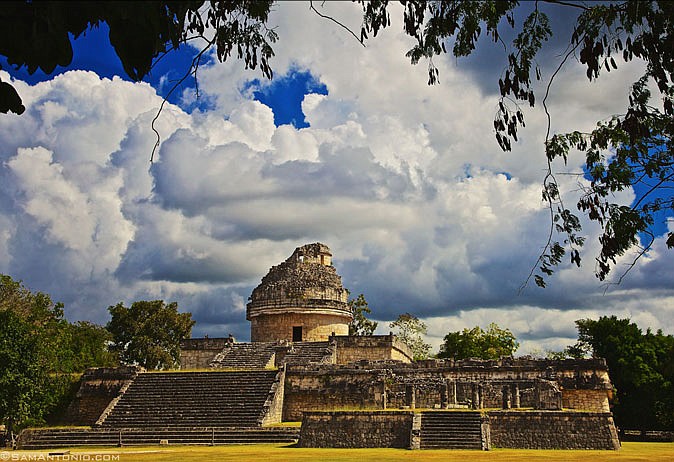 Facebook
Facebook
 X
X
 Instagram
Instagram
 TikTok
TikTok
 Youtube
Youtube

December 21, 2012, marked the milestone of not just another candle on my birthday cake, but also the Apocalypse: when the Maya's "Long Count" calendar indicated the end of a 5,126-year era. Forget America’s “fiscal cliff” plight – this was going to be doomsday of epic proportions.
Well, December 21, 2012, has come and gone and the world is still intact.

Chichén Itzá ("mouth of the well of Itzá"), located in the Yucatán of Mexico, is the apex of Maya archaeological sites. A UNESCO World Heritage Site since 1988, it's also one of the New Seven Wonders of the World.
A visit to Chichén Itzá is a journey into understanding the mysteries of the Maya astronomical calendar, since the design of the temples reflect the Maya’s mastery of time and space.
The Kukulkan Pyramid, also called “El Castillo” (The Castle), is the architectural highlight of the ruins. This structure is famous for having various Maya calendar cycles represented in the number of steps, platforms, sides and levels, all of which are aligned with the equinox sun, such that on those days only, a serpent-shaped shadow descends the steps. The pyramid has four stairways, each with 91 steps and a platform at the top; this makes for a total of 365, equivalent to the number of days in a calendar year.
Last November when I was in Chichén Itzá, I had the opportunity to talk with local Maya people to asked them if the world was really going to end on December 21, 2012. They smiled at me politely, laughed and said no.
When I mentioned to one gentleman that my birthday coincided with the end of the Maya Long Count calendar, he looked at me sternly and said, “You’ll be one year older, so my friend you will be fatter, slower and gray hairs will appear on your head. Your world will be ending, but not the Mayan's!”
The Mayas love a good joke.
Until the next apocalypse!


December 21, 2012, marked the milestone of not just another candle on my birthday cake, but also the Apocalypse: when the Maya's "Long Count" calendar indicated the end of a 5,126-year era. Forget America’s “fiscal cliff” plight – this was going to be doomsday of epic proportions.
Well, December 21, 2012, has come and gone and the world is still intact.

Chichén Itzá ("mouth of the well of Itzá"), located in the Yucatán of Mexico, is the apex of Maya archaeological sites. A UNESCO World Heritage Site since 1988, it's also one of the New Seven Wonders of the World.
A visit to Chichén Itzá is a journey into understanding the mysteries of the Maya astronomical calendar, since the design of the temples reflect the Maya’s mastery of time and space.
The Kukulkan Pyramid, also called “El Castillo” (The Castle), is the architectural highlight of the ruins. This structure is famous for having various Maya calendar cycles represented in the number of steps, platforms, sides and levels, all of which are aligned with the equinox sun, such that on those days only, a serpent-shaped shadow descends the steps. The pyramid has four stairways, each with 91 steps and a platform at the top; this makes for a total of 365, equivalent to the number of days in a calendar year.
Last November when I was in Chichén Itzá, I had the opportunity to talk with local Maya people to asked them if the world was really going to end on December 21, 2012. They smiled at me politely, laughed and said no.
When I mentioned to one gentleman that my birthday coincided with the end of the Maya Long Count calendar, he looked at me sternly and said, “You’ll be one year older, so my friend you will be fatter, slower and gray hairs will appear on your head. Your world will be ending, but not the Mayan's!”
The Mayas love a good joke.
Until the next apocalypse!
Comments